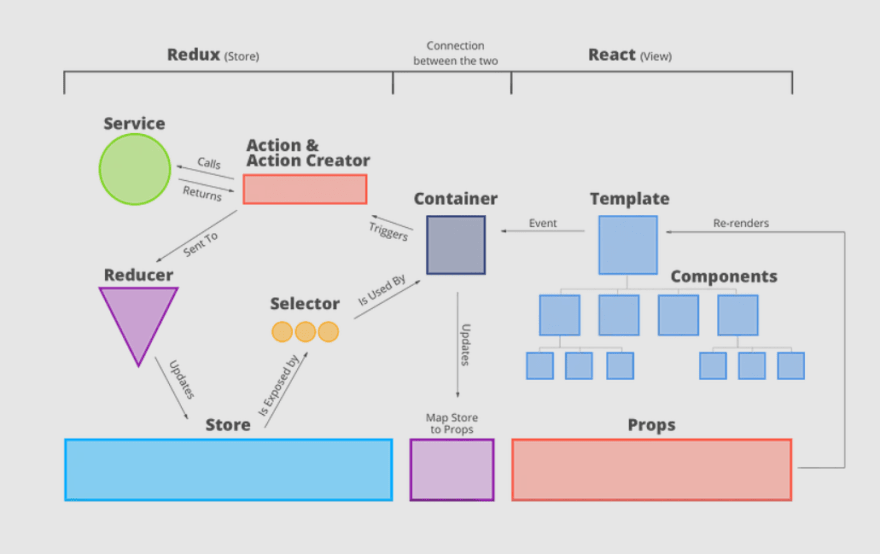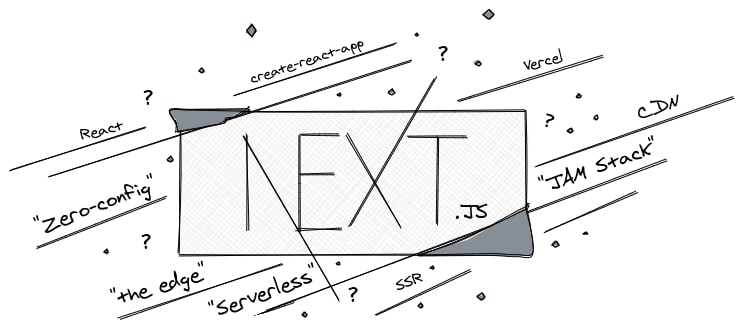

What is your favorite React stack?
source link: https://dev.to/codeofrelevancy/what-is-your-favorite-react-stack-4p
Go to the source link to view the article. You can view the picture content, updated content and better typesetting reading experience. If the link is broken, please click the button below to view the snapshot at that time.
What is your favorite React stack?
As a web developer, choosing the right stack for your project can be a critical decision. With the rising popularity of React, many developers have been drawn to its simplicity, flexibility, and scalability. But with so many different React stacks to choose from, it can be challenging to decide which one is the best fit for your project.
So, what is your favorite React stack? There are several popular options to choose from, each with its unique benefits and drawbacks. Here are some of the most widely used React stacks:
MERN Stack
The MERN stack is a popular web development stack that combines MongoDB, Express, React, and Node.js. This stack has gained significant popularity over the past few years due to its flexibility, scalability, and ease of use. Each component of the MERN stack has its specific role in web development.
MongoDB is a NoSQL database that uses JSON-like documents with dynamic schemas, making it flexible and scalable. Express is a web application framework for Node.js that provides a robust set of features for web and mobile apps. React is a JavaScript library used for building user interfaces, while Node.js is a JavaScript runtime built on Chrome's V8 JavaScript engine.
One of the primary advantages of using the MERN stack is its versatility. The stack can be used to develop web apps for various industries and sectors, such as healthcare, finance, and e-commerce. Another benefit is the ease of deployment, which is made possible by the use of Node.js as a server-side runtime.
MERN is an open-source stack that is supported by a large community of developers. This community provides ongoing support, updates, and new features that make the stack even more powerful and efficient. The stack's modular structure enables developers to work on each component separately, making it easy to scale up or down as needed.
The MERN stack is also suitable for creating real-time applications, such as chat apps, due to its ability to handle complex, multi-channel communication. This feature is facilitated by the use of WebSockets, which enable real-time data exchange between the client and the server.
The MERN stack is an excellent choice for web developers looking for a robust, scalable, and versatile stack. Its components are well suited for building modern web apps that require real-time data exchange, dynamic data structures, and scalability. Its open-source nature, community support, and modular structure make it a favorite among web developers worldwide.
MEAN Stack
The MEAN stack is similar to MERN but uses Angular instead of React. This stack is a collection of technologies that are often used together to develop web apps. The name MEAN is an acronym that stands for:
MongoDB: a NoSQL database that stores data in a JSON-like format.
Express: a web application framework for Node.js that provides a set of features and tools for building web apps.
Angular: a front-end JavaScript framework for building dynamic single-page apps.
Node.js: a JavaScript runtime environment that allows developers to run JavaScript code outside of a web browser.
Together, these technologies provide a complete solution for building web applications, from the front-end to the back-end. MongoDB provides a flexible and scalable data storage solution, while Express and Node.js provide a server-side environment for running JavaScript code and building RESTful APIs. Angular provides a powerful front-end framework for building dynamic web interfaces and connecting with the back-end.
The MEAN stack has become popular among developers because it allows them to build web apps using a single language, JavaScript, from the front-end to the back-end. This can help simplify the development process and allow for more efficient communication between different parts of a development team. If I say more, the use of open-source technologies like Node.js, MongoDB, and Angular can help reduce the cost of building web apps, as these technologies are free to use and have large developer communities.
React Redux Stack
React Redux is a popular stack for building web apps using JavaScript. It combines two powerful libraries: React and Redux, to create scalable and efficient applications.
React is a JavaScript library for building user interfaces. It allows developers to create reusable UI components and manage the state of the application in a declarative way. React provides a virtual DOM, which allows for efficient updates to the UI, and a component-based architecture, which promotes code reuse and separation of concerns.
On otherside, Redux is a predictable state container for JavaScript apps. It provides a centralized store for managing the state of the app and ensures that state changes are made in a predictable and consistent way. Redux is based on the principles of functional programming and immutability, which makes it easier to reason about the behavior of the app and to test it.
Together, React and Redux provide a powerful stack for building web apps. React provides a flexible and efficient UI layer, while Redux provides a predictable and manageable state layer. By using these two libraries together, developers can create scalable, maintainable, and testable web applications.
Next.js Stack
Next.js is a full-stack framework for building modern web applications. It is based on React and Node.js and provides a powerful set of tools and features to build scalable and performant applications. Next.js allows developers to render web pages on the server side, which improves website performance and search engine optimization.
The Next.js stack includes:
React - Next.js is built on top of React, a popular JavaScript library for building user interfaces.
Node.js - Next.js uses Node.js as its server-side runtime environment, allowing for server-side rendering and API integration.
Webpack - Next.js uses Webpack for bundling and optimizing JavaScript and other assets.
Babel - Next.js uses Babel for transpiling modern JavaScript code to a format that can be run in older browsers.
Express - Next.js uses Express as its server-side web framework, providing a flexible and easy-to-use API for building web apps.
CSS Modules - Next.js supports CSS Modules, allowing for modular and reusable styling of components.
TypeScript - Next.js supports TypeScript, a typed superset of JavaScript that adds additional safety and clarity to code.
GraphQL - Next.js integrates with GraphQL, a powerful query language for APIs, allowing for efficient data fetching and management.
Serverless - Next.js supports serverless deployment, allowing for easy and cost-effective scaling of apps.
The Next.js stack provides a comprehensive and flexible set of tools for building modern web apps.
Gatsby Stack
Gatsby is another framework for building server-side rendered React applications. This stack includes Gatsby, React, and Node.js. Gatsby is used to create server-side rendered applications, React is used for building the UI components, and Node.js provides the runtime environment. This stack is preferred by developers who want a more fast and performant solution.
The Gatsby stack typically includes the following technologies:
Gatsby: a static site generator built on top of React that allows developers to create blazing-fast, highly optimized websites and applications.
React: a popular JavaScript library for building user interfaces that is used as the foundation for Gatsby.
GraphQL: a query language for APIs that is used by Gatsby to pull data from various sources, including CMSs, APIs, and databases.
Headless CMS: a content management system that separates the content management functionality from the presentation layer. Examples of headless CMSs that work well with Gatsby include Contentful, Sanity, and Strapi.
Git: a version control system that is commonly used in combination with Gatsby to manage code changes and collaborate with other developers.
Hosting platform: Gatsby sites can be hosted on a variety of platforms, including Netlify, AWS Amplify, and Firebase, among others.
Plugins: Gatsby has a large ecosystem of plugins that can be used to extend its functionality, such as plugins for image optimization, SEO, and accessibility.
Moving forward to conclusion, the Gatsby stack provides developers with a powerful and flexible set of tools for building high-performance, modern web applications and websites.
Choosing the right React stack for your project depends on your requirements and preferences. Consider factors such as scalability, performance, development time, ease of use, and maintenance. Whatever stack you choose, make sure it aligns with your goals and provides the necessary features and functionalities to make your project a success.
There is no one-size-fits-all solution when it comes to choosing a React stack. Each stack has its own unique strengths and weaknesses. Ultimately, the right choice depends on your project requirements, skill set, and goals. So, take the time to research and evaluate each option, and choose the one that best suits your needs.
🍀Support
Please consider following and supporting us by subscribing to our channel. Your support is greatly appreciated and will help us continue creating content for you to enjoy. Thank you in advance for your support!
Recommend
About Joyk
Aggregate valuable and interesting links.
Joyk means Joy of geeK





